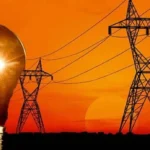J&K’s Untapped Hydropower Potential: A Call for Urgent Action to Address Power Crisis
The Union Territory of Jammu and Kashmir, with an estimated hydropower potential of 18,000 MW, is underutilizing this vast resource, currently harnessing just 3,540.15 MW. Despite the region’s strategic positioning near three major river basins — Chenab, Jhelum, and Ravi — significant portions of the potential remain untapped, worsening the ongoing power crisis.
Of the total potential, the Chenab basin holds 76%, but it has only contributed 2,033.05 MW. The Jhelum basin offers 1,378.1 MW, and the Ravi basin contributes a mere 129 MW. This discrepancy highlights the inefficiency of the region’s hydropower development and its implications for J&K’s energy security, economic growth, and sustainability.
Several factors contribute to this underperformance, including hurdles stemming from the Indus Water Treaty with Pakistan, along with internal bureaucratic, technical, and environmental challenges. Progress has been slow with many key projects delayed or incomplete. Although 15 projects with a combined capacity of 7,768 MW are underway, the ongoing projects are still far from meeting the region’s growing energy needs. Six projects contributing 3,063.5 MW are still in progress, and two additional projects totaling 141 MW are still in the award stage.
Joint ventures in the Chenab basin, expected to generate 3,014 MW by 2027, represent a positive step, but the slow pace of development raises questions about the governance and priorities that have shaped hydropower growth in the region.
J&K’s outdated power infrastructure, coupled with frequent disruptions and power shortages, leaves the region heavily reliant on power imports, creating financial and logistical challenges. This not only hampers daily life but also stifles industrial development, tourism, and overall economic growth, especially given the region’s historical challenges with terrorism and instability.
To address these issues, experts are calling for a more coordinated approach. Expediting approval and implementation processes for projects still in DPR or clearance stages is critical. Reducing bureaucratic red tape, streamlining approvals, and addressing technical and financial barriers should be prioritized. Public-private partnerships, exemplified by successful joint ventures like CVPPPL and RHPCL, should be further encouraged to bring in investment and expertise.
The region also needs to closely monitor ongoing agreements, such as the 2021 MoU with NHPC, which promises the development of 1,856 MW Sawalkote and 258 MW Dulhasti projects under a BOOT basis. Successful execution of these projects is key to addressing J&K’s energy needs.
A comprehensive overhaul of governance, policy, and strategy in the power sector is essential. With strong political will and administrative support, the region can unlock its vast hydropower potential, ensuring a sustainable and energy-secure future. Harnessing this dormant resource is not only vital for the region’s growth but also for ensuring energy independence.









